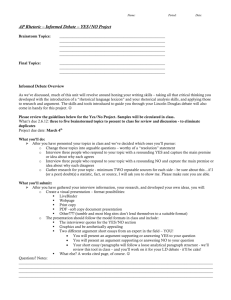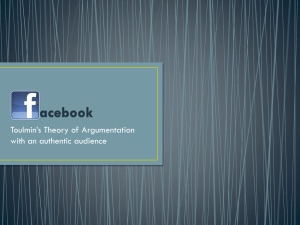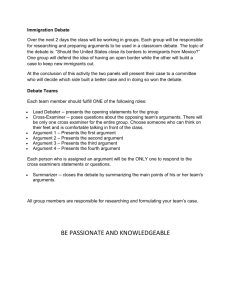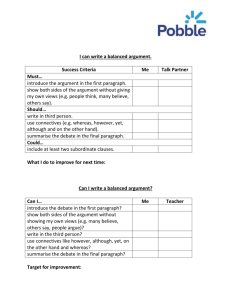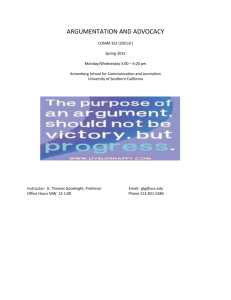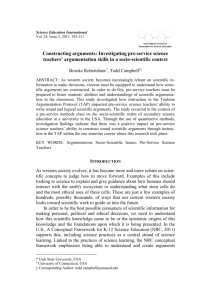Argument
advertisement
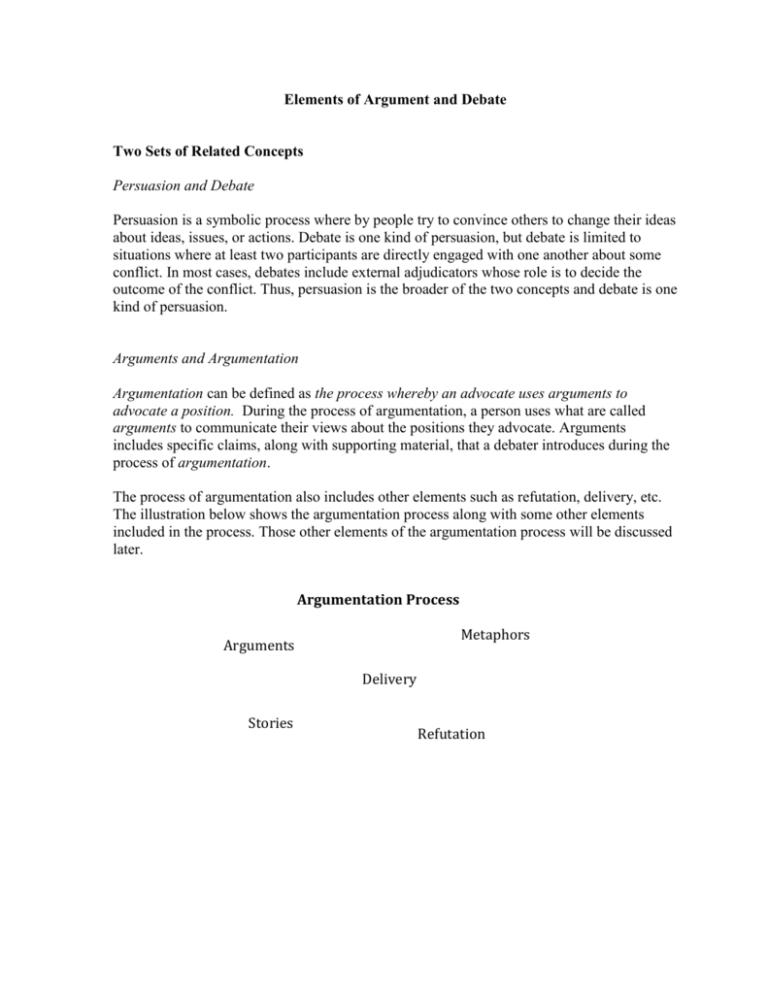
Elements of Argument and Debate Two Sets of Related Concepts Persuasion and Debate Persuasion is a symbolic process where by people try to convince others to change their ideas about ideas, issues, or actions. Debate is one kind of persuasion, but debate is limited to situations where at least two participants are directly engaged with one another about some conflict. In most cases, debates include external adjudicators whose role is to decide the outcome of the conflict. Thus, persuasion is the broader of the two concepts and debate is one kind of persuasion. Arguments and Argumentation Argumentation can be defined as the process whereby an advocate uses arguments to advocate a position. During the process of argumentation, a person uses what are called arguments to communicate their views about the positions they advocate. Arguments includes specific claims, along with supporting material, that a debater introduces during the process of argumentation. The process of argumentation also includes other elements such as refutation, delivery, etc. The illustration below shows the argumentation process along with some other elements included in the process. Those other elements of the argumentation process will be discussed later. Argumentation Process Metaphors Arguments Delivery Stories Refutation Elements of Argument Components of Arguments Building Global Relations Through Debate will introduce four components of an argument. For the purposes of this discussion, those four components have been simplified and reduced to two components: a claim and supporting material Support + + Claim Argument = Claims and Supporting Material To be an argument, the claim needs some kind of support. A statement without any kind of support is merely an assertion. When support for the claim is added to the claim itself, it becomes an argument. As stated earlier and as will be further developed in later chapters, many different kinds of materials can be used to support claims. In this chapter, a few examples are presented to clarify the ways that supporting material can be tied to a claim to create an argument. Claim Supported By Evidence The simplest way to think of an argument is that it involves a claim supported by evidence. Evidence is supporting material that has been observed or is potentially observable. The following diagram illustrates a claim supported by evidence. Argument Evidence: Observations of the fossil record + + Claim: Humans evolved from other species Elements of Argument Claim Supported By Explanation Argument Explanation: When Robert was a child, a snake bit him. Claim: Robert is afraid of snakes. + + Claim Supported by Analogy Argument Analogy: Like Mao Zedong, Xi Jinping is taking China in new and positive directions. + + Claim: Xi Jinping is one of China’s greatest leaders. Claim Supported by Other Claims Argument Claim One + + Claim Two Claim Three Elements of Argument A frequent pattern of using claims to support other claims involves combining a descriptive claim with an associational claim to support an evaluative claim. The diagram below illustrates this basic pattern. Argument Descriptive claim + + Associational Claim Evaluative Claim Argument Descriptive claim: Current laws allow smoking in public places. + + Associational Claim: Smoking in public places subjects nonsmokers to health risks. Evaluative Claim: Smoking should not be allowed in public places


